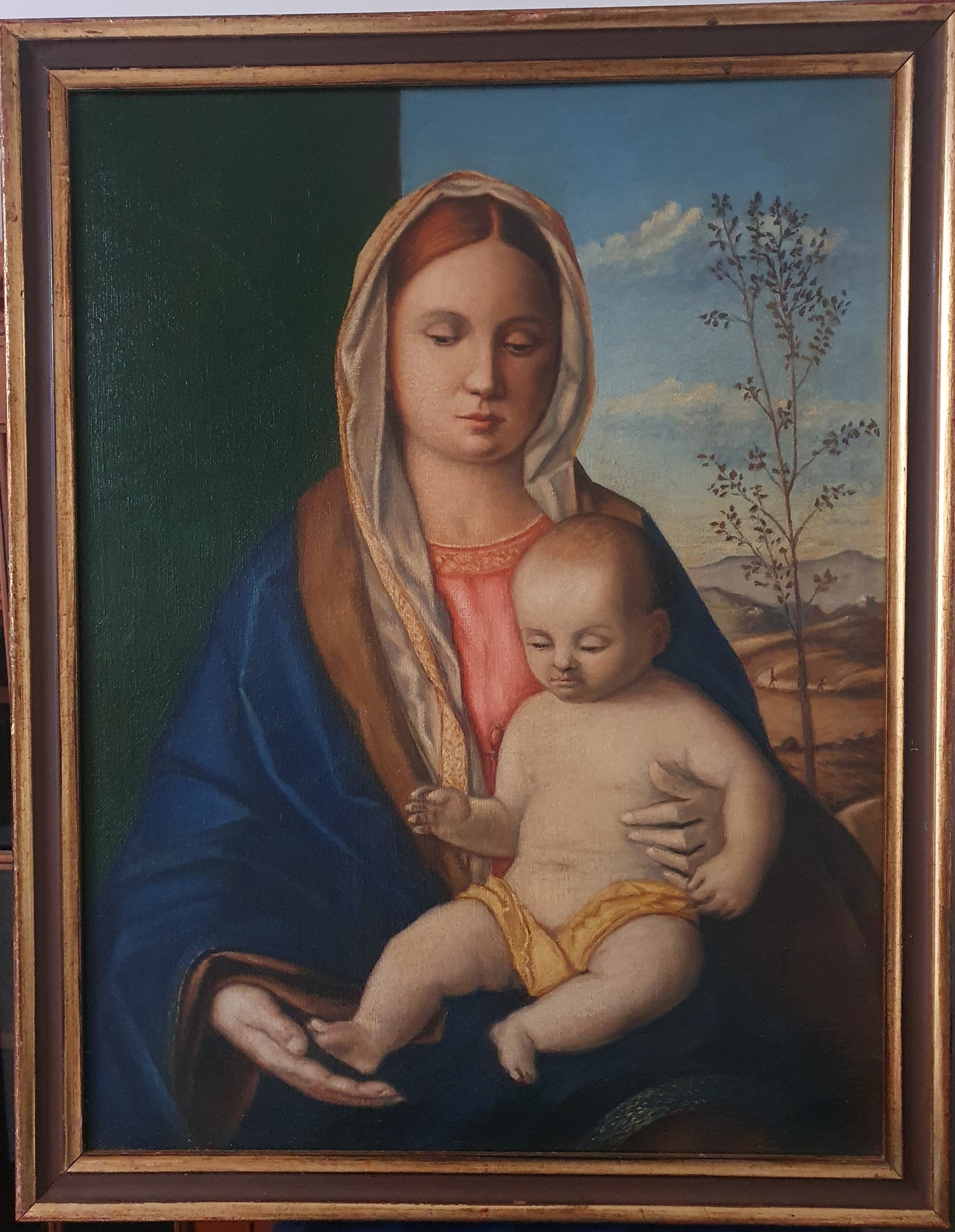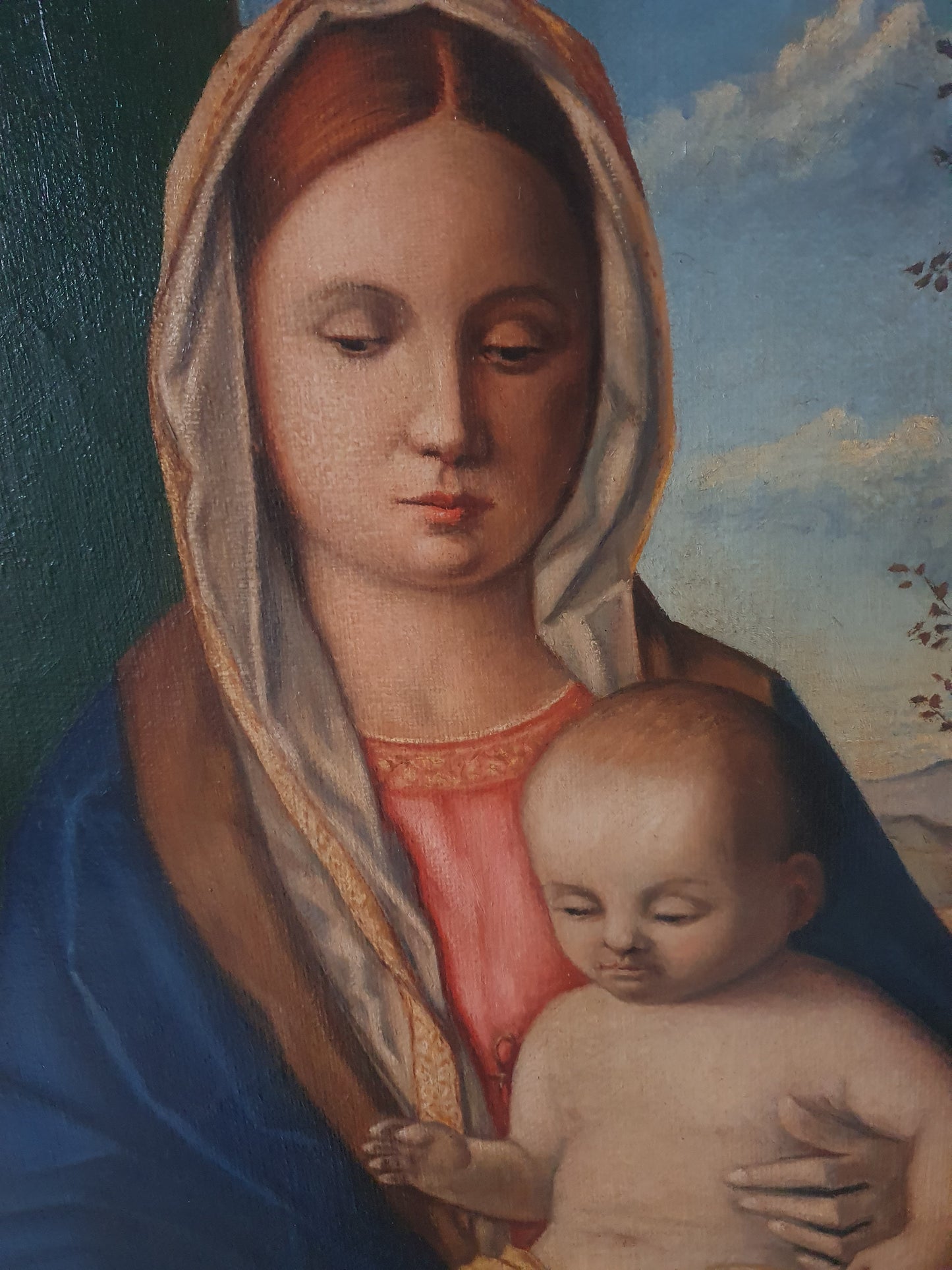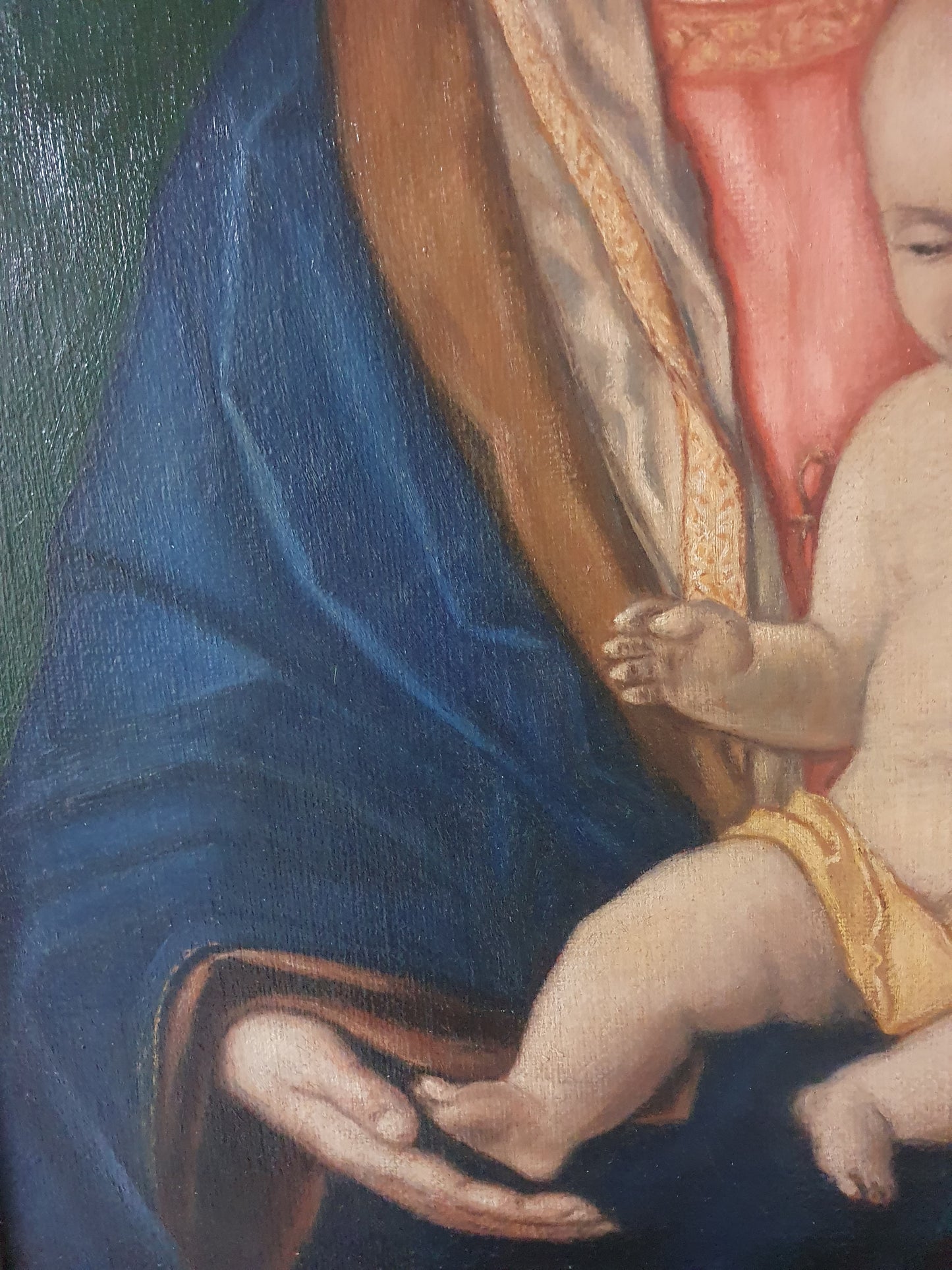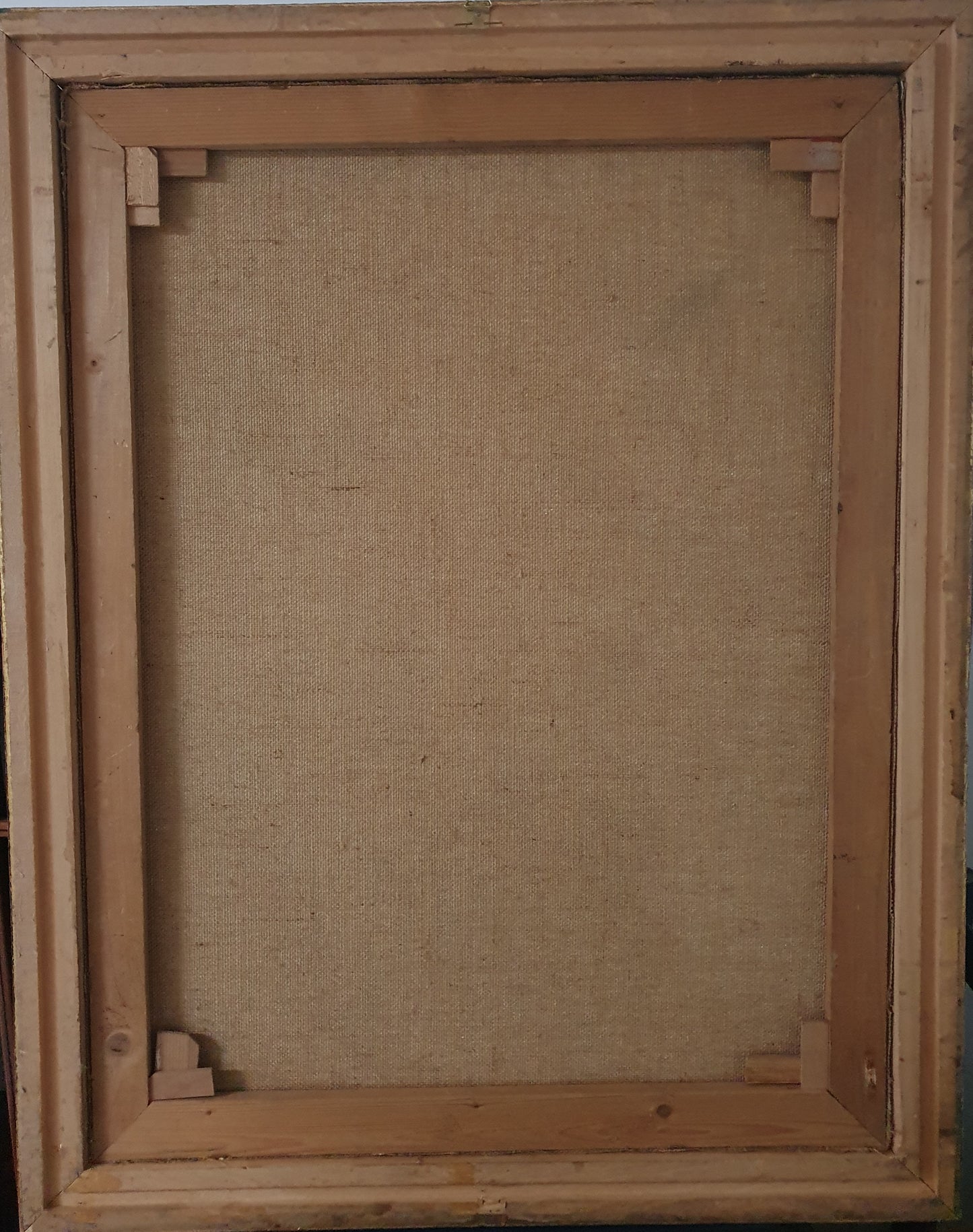Early 19th Century 1510 Renaissance Grand Tour Representation of Madonna and Child by Giovanni Bellini also known as il Giambellio, Venice 1430-1516</p> <p> </p>
Couldn't load pickup availability
A high quality 19th century 1510 renaissance Grand Tour representation of Madonna and Child by Giovanni Bellini also known as il Giambellio, Venice 1430-1516
Superb condition and in a high quality gilt frame by a prolific hand.
Oil on canvas
90 x 71 cm
£400
Giovanni Bellini, also known as “il Giambellino” (Venice, about 1430 - 1516) is one of the great names in the history of Italian art, as he is considered the initiator of the Renaissance in Venice. Born into a family of painters (his father Jacopo and his brother Gentile were among the most important artists of fifteenth-century Venice), he soon managed to detach himself from the late-Gothic schemes within which he had formed to embrace first the art of his brother-in-law Andrea Mantegna (Isola di Carturo, 1431 - Mantova, 1506), then that of Piero della Francesca (Borgo Sansepolcro, 1416 - 1492) and again that of Antonello da Messina (Antonio di Giovanni de Antonio; Messina, 1430 - 1479), which made his art brighter and softer: ready, therefore, to open the way to Venetian tonal painting, which he would have found in Giorgione his most important heir.
The artist spent his entire career in the Venice of the mid-fifteenth century, at the time when the city, which was threatened by the Turks on the rule of the seas, had begun to undertake its own expansionism towards the mainland, which began already at the beginning of the fifteenth century: important in this sense was the conquest of Padua in 1405, a fact of considerable importance for the cultural and artistic development of Venice. In fact, Padua had a university and an intellectual class more refined than the Venetian one, not to mention the fact that soon it would have hosted some of the great artists of the Tuscan Renaissance, such as Donatello a Paolo Uccello. Tuscan artists would soon begin to work in Venice or for Venice: the city, in its expansion on the mainland, found itself in conflict with the expansionist policy of the Duchy of Milan, and to stem the Milanese danger, Venice allied with Florence. Therefore, soon political contacts also gave rise to considerable cultural contacts, and among the artists who stayed in Venice it is necessary to mention Lorenzo Ghiberti, Michelozzo, Leon Battista Alberti, Paolo Uccello himself and others, all present in the city in the twenties and thirties of the fifteenth century, and it is possible to hypothesize that some of these presences were due to the fact that Cosimo the Elder, in exile from Florence, after being in Padua settled for some time in Venice and therefore some artists followed him. This climate of cultural fervor therefore managed to renew Venetian art, at that time still dominated by late-Gothic tastes, which in any case will dictate the trends for some time: however, this is the season during which the Venetian Renaissance is inaugurated, which then receives a very important impulse thanks to the contribution of the art of great masters such as Andrea Mantegna, Piero della Francesca and Antonello da Messina. This is the climate in which Giovanni Bellini moves.
The artist had trained in the workshop of Jacopo Bellini, an important painter of late-Gothic training who had then welcomed some Renaissance novelties (his brother Gentile, another important Venetian painter of the time, was also active in the paternal workshop). In addition to his father, Giovanni Bellini also looks at the art of the Vivarini, especially Antonio Vivarini, another great name in Venetian art of the early fifteenth century, but decisive for his formation is the meeting with Andrea Mantegna of whom Giovanni Bellini would also become a brother-in-law (in 1453 in fact Mantegna marries the sister of Giovanni and Gentile, Nicolosia). And the first works of Giovanni Bellini are affected by the influence of Mantegna.














